Ryan Hall's Blog, page 160
June 12, 2017
Here Are The Pros And Cons Of Running With A Group
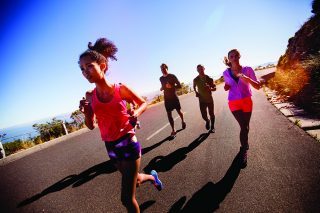
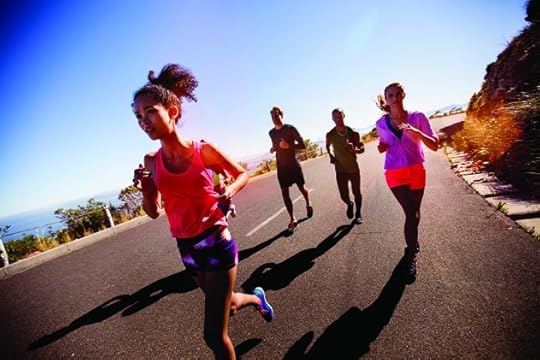
Fifteen years ago, Gilbert Tuhabonye started a running group in Austin, Texas, “to create a community,” he says. Today, the Burundi genocide survivor’s group, Gilbert’s Gazelles, is one of the biggest and most popular in the area. And his runners, he says, inspire him as much as he inspires them. The weekly workouts give them all a chance to add some “joy” to their training—a Tuhabonye principle.
But group workouts can come in all shapes and sizes—from elite performance squads to casual get-togethers. If you’re ready to start running with a group, there are some pros and cons, and things to know before you go.
The Benefits
Have some fun
As the cliché goes, being a long-distance runner can get lonely at times. A group makes it more fun, especially if you’re a busy runner.
“You don’t have time for work, exercise and a social life,” says Kevin Jermyn, executive director of the Chicago Area Runners Association (CARA). Group runs allow your exercise time to double as your social time—as long as you make friends with the people involved! “We’ve had a ridiculous number of people who have gotten engaged or married [after meeting in the running group.]”
Be accountable
Meeting a group (or even just another person) also makes you accountable to actually getting the workout done. For most of us, that forces us to stick to our training plan.
“If someone’s waiting for me, I’m not going to quit,” Tuhabonye says. That’s particularly true for early morning workouts and hard runs.
Push yourself
Most runners, said Jermyn, have no problem with their regular easy runs, but to go long or to go fast, “they have to have other people for that,” he says.
We might not even know what we’re capable of until we push ourselves in a faster pace group or try to keep up with our fast friends.
Get guidance and advice
Those friends can also be a good source of advice. More than half the people who join CARA’s marathon training program are first-timers. For someone running their first marathon, there can be a lot of information for them to absorb. The way the groups are structured means they don’t have to learn it all at once. Instead, Jermyn says, they can pick up tips and advice from the experienced runners and coaches along the way.
This is especially true for coached groups following a consistent training plan.
RELATED: 7 Tips for Starting a Successful Running Club
The Downsides
You can push yourself too hard
“There are pros and cons,” Jermyn says. “Certainly, competitive people can risk pushing themselves too hard.”
That’s especially true if you show up for a group run not quite ready for what you’re getting into or you try to keep up with people you have no business keeping up with. That’s why Tuhabonye has people fill out questionnaires about their fitness and recent results, and even do a test to find out where they’re at with it.
One size doesn’t fit all
Both CARA’s programs and Gilbert ’s Gazelles workouts are coached in-person, with many of the athletes training for the same race. That means the plan is both created by a certified coach and structured for the specific race, with the ability to make adaptations for an individual’s paces or needs.
But not every running group has a coach; many are simply informal collections of friends. And even if there is a coach, it doesn’t necessarily mean the workout or the plan is the best one for you. (Although it’s still better than no workout and no plan.) Plus, by definition, along with doing a certain workout, a group meets at a certain time and place. All those things might be convenient or right for you, or they might not.
You won’t learn to suffer alone
Training with a group is fun and pushes you, but when it comes time to race, you have to race on your own. There’s a school of thought that sometimes you need to get out there on your own and learn what it takes to battle through the tough days.
All those issues are real, but Jermyn points out that most elite athletes train in squads precisely because they want the support and company. The day-in, day-out grind can be hard, and a group makes it easier.
“The best marathoners in the world all train in a group,” Jermyn says.
RELATED: How to Start Your Own Unique Run Crew
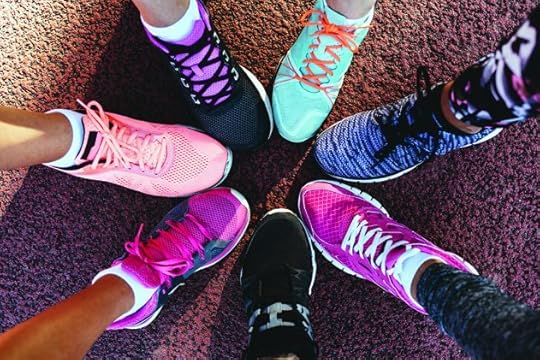
Getting Started
Before you lace up your shoes and set your alarm clock, “do your homework,” Tuhabonye advises, to figure out what group is right for you and what is expected.
You can search for groups on the websites of Road Runners Club of America or USA Track and Field. You can also ask at a running shop, talk to other runners, or check out local race and expos.
Then you’ll want to talk to the person in charge to make sure you know what to expect—where will the route go, do you need to bring food or water, what kind of gear is necessary for this workout. And it may take a couple tries to find the group culture that’s right for you: some are more performance oriented, some are more laid-back.
If you do it right, “joining a group is like joining a family,” Tuhabonye says. That comes with all the good and bad of a family.
The post Here Are The Pros And Cons Of Running With A Group appeared first on Competitor.com.
These Shoes Are Built To Collect Your Running Data

Photo: Oliver Baker
For the past several years, watches, trackers and phone apps have allowed runners to keep track of their pace, distance, time and heart rate. Now, running shoes have emerged that seek to provide “built-in” sensing of biomechanics with companion apps that provide views of the data plus coaching.
Altra Running Torin IQ, $220
Weights: 9.3 oz. (men), 7.4 oz. (women)
Heel-to-Toe Offset: 0mm; 28mm (heel), 28mm (forefoot)
Altrarunning.com
The Torin IQ is based on Altra’s best-selling Torin shoe, but adds a sophisticated biomechanics sensing and coaching system. Embedded in the midsole of each shoe are three razor thin G-force sensors, accelerometers and capture pods that feed data in real time to the Altra IQ app. The pods have replaceable coin batteries that Altra says should last up for to 400 miles at 10-minute pace. The Torin IQ is an outstanding, beautifully crafted daily trainer but given its cost runners may want to use it more occasionally as a tool to establish and keep good form habits, especially during uptempo and speed runs where form can go south. The system continuously measures and transmits landing zone, cadence, impact rate and ground contact time for both feet to your phone, which must be with you as you run. Perching your phone or a tablet on a treadmill is the ideal way to get real time visual indication of landing zone locations and all the metrics. The audio form coaching tips tend to emphasize upper body and arm carriage, as research has shown that getting this right improves cadence, reduces ground contact time and leads to softer landings with less over-striding. For example, you could hear: “It looks like you are over-striding. To fix this, try popping your elbows back and don’t let them extend forward past your hips.” You can choose to receive general running tips or get more reactive form correction coaching based on the sensor data.
Under Armour Speedform Gemini 3 RE, $160
Weights: 9.9 oz. (men), 8.3 oz. (women)
Heel-to-Toe Offset: 8mm; 27mm (heel), 19mm (forefoot)
Underarmour.com
While the Torin IQ is a sophisticated form coaching system, the Gemini 3 RE keeps things simple. A single sensor pod is embedded in the right shoe. The battery is not replaceable and is designed to last the life of the shoe. The Gemini works in conjunction with UA’s MapMyRun app for data storage and sharing, and if you run with your phone, it’ll additionally give you cadence. You don’t need to run with your phone for the shoe to record what we found are accurate distances and paces vs. high-end GPS watches. That makes this shoe great for treadmill running, or city running where buildings can interfere with GPS signals. There is no way yet to pause or auto pause a run when without a phone. The shoe will detect you have stopped for good after 3 minutes of easy walking or standing around. An unusual feature of the Gemini 3 RE system is its Jump Test: six vertical jumps done in rapid succession. It assesses muscle fatigue and recovery pre-workout. The app then advises an appropriate intensity for your run. We found it a useful complement to heart rate and sleep-based recovery scores, which don’t directly consider potential muscle fatigue. The Gemini itself is a superb daily trainer with a softer, energetic ride from its Charged Cushioning midsole and a supportive and comfortable upper. UA also offers the 8-ounce Record-Equipped Velociti performance trainer/racer ($140), and the 10.4-ounce Europa RE stability trainer ($160).
RELATED: 7 Great Apps To Track Your Running Data
The post These Shoes Are Built To Collect Your Running Data appeared first on Competitor.com.
Black Bear Startles Runners And Joins 10-Miler In Colorado
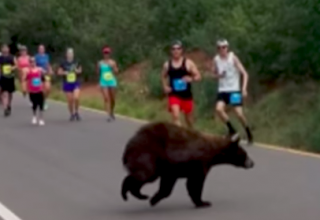
This past weekend during the Garden of the Gods 10-miler in Colorado Springs, Colo., runners had quite the furry surprise on the race course.
A black bear jumped in about halfway through the course and CBS4 in Denver caught up with Donald Sandborn who snapped the perfect shot. No runners were injured and the bear wasn’t seen again. Watch the video about the amazing photo and to hear from Sandborn himself on the sighting.
RELATED: The Do’s and Don’ts of Wildlife Encounters on the Trail
The post Black Bear Startles Runners And Joins 10-Miler In Colorado appeared first on Competitor.com.
How A Thumbs Up Changed Author John Green’s Running

To wave or not to wave is a hotly contested topic within the running community. There never seems to be an agreement on if or how we should acknowledge passing runners. However John Green, the author of the popular young adult novels A Fault In Our Stars and Paper Towns, recently shared his life changing experience with the “thumbs up.”
Green shares a YouTube channel with his brother Hank. Known as the vlogbrothers, their weekly musings to each other have attracted over 3 million subscribers. In a recent video, Green spoke of training for this first half marathon. While out for 12 miles, his longest training distance yet, a passing runner gave him a thumbs up. While Green originally thought the gesture could be condescending, he noticed his pace for the next mile was substantially quicker. He also realized how much happier he suddenly felt.
For the rest of his run, Green decided to give a thumbs up to every runner he passed. It wasn’t always reciprocated, but Green felt what he described as “a surge of energy and happiness” allowing him to run his fastest mile ever.
Watch Green’s hilarious description of his run above. It might convert you into a thumbs up runner too.
The post How A Thumbs Up Changed Author John Green’s Running appeared first on Competitor.com.
Peanut Butter Oatmeal Muffins Make The Best Post-Workout Snack

These muffins are delicious and they make great post-workout snack as well.
Peanut Butter Oatmeal Muffins
Start to finish: 20 to 25 minutes
Prep time: 5 to 10 minutes
Cook time: 15 minutes
Servings: 12 full-size or 24 mini muffins
Ingredients:
⅓ cup natural peanut butter
2 ripe bananas, mashed
⅛ cup raw honey
1 teaspoon vanilla extract
⅛ cup unsweetened almond milk (if mixture seems too dry, add another tablespoon or so)
2 cups old fashioned rolled oats (not the quick cooking kind)
¼ cup chocolate chips
Instructions:
Preheat oven to 350 degrees F.
Mix peanut butter, bananas, honey, vanilla extract and almond milk in a bowl. Add the oats and chocolate chips and mix until just combined. Lightly oil a muffin tin and spoon batter into each cup. Bake in the oven for 15 minutes.
Muffins can be kept in the fridge for several days or frozen.
Options:
Use unsweetened applesauce instead of bananas. You can also use your favorite nut butter in place of peanut butter.
RELATED: 5 Delicious Recipes To Help You Recover
The post Peanut Butter Oatmeal Muffins Make The Best Post-Workout Snack appeared first on Competitor.com.
Kenya’s Mary Keitany Wins Fifth Consecutive NYRR Race
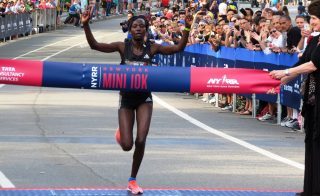
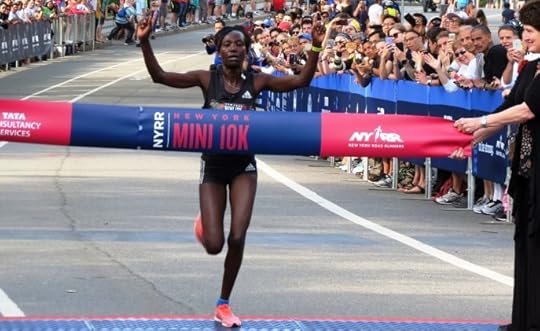 Mary Keitany of Kenya wins her second NYRR New York Mini 10K breaking the tape in 31:20. Photo: Jane Monti for Race Results Weekly
Mary Keitany of Kenya wins her second NYRR New York Mini 10K breaking the tape in 31:20. Photo: Jane Monti for Race Results Weekly
This weekend, Kenya’s Mary Keitany—the three-time defending TCS New York City Marathon champion—took her second win at the NYRR New York Mini 10K in Central Park. She finished in 31:20, more than 48 seconds ahead of the rest of the field. The first-place prize was $10,000 as part of the $35,150 prize purse.
This marked Keitany’s fifth consecutive win of a NYRR race and will return on Nov. 5 to go for her fourth consecutive TCS New York City Marathon title.
Ethiopia’s Mamitu Daska finished second in 32:09–her third time making the podium in the event–and Aliphine Tuliamuk of the U.S. rounded out the top three with her second consecutive podium finish in the event, clocking in at 32:14.
In total, 8,419 runners crossed the finish line at this year’s NYRR New York Mini 10K, the world’s first women’s-only road race which has brought together generations of women since 1972.
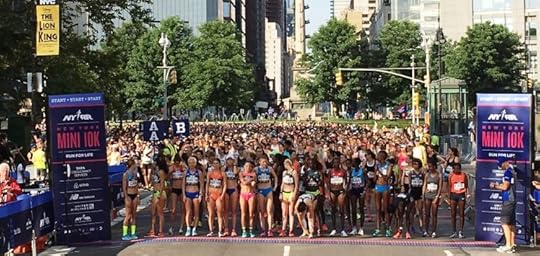 Approximately 9,000 women lined up for the start of the 2017 NYRR New York Mini 10K on Saturday. Photo: David Monti for Race Results Weekly
Approximately 9,000 women lined up for the start of the 2017 NYRR New York Mini 10K on Saturday. Photo: David Monti for Race Results Weekly
The NYRR New York Mini 10K got its name when race founder Fred Lebow convinced the sponsor to support a six-mile “mini” marathon—named for the miniskirt—rather than a full marathon. It was the world’s first road race exclusively for women, with the inaugural race having 78 entrants. The race’s first-ever winner, Jacki Marsh-Dixon, held the finish-line tape at the race’s 46th running on Saturday.
RELATED: Mary Keitany to Challenge Edna Kiplagat At New York Mini 10K
The post Kenya’s Mary Keitany Wins Fifth Consecutive NYRR Race appeared first on Competitor.com.
June 9, 2017
Notice Of Doping Allegations Sent To Nike Oregon Project Doctor
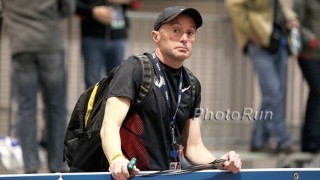
Photo: PhotoRun.net
The United States Anti-Doping Agency (USADA) has issued a notice of rules violation to Dr. Jeffrey Stuart Brown, according to a report from the New York Times. Dr. Brown, a Texas-based endocrinologist, has treated athletes on the Nike Oregon Project team and is reportedly the personal physician to coach Alberto Salazar.
The Times notes that “the notice is a formal signal that officials are pursuing sanctions in the case.” Following the receipt of the notice, Dr. Brown can respond to allegations in writing. The case will then go to a review board, who will decide whether to bring about charges. Then Dr. Brown can either accept or challenge any charges in arbitration before sanctions are handed down.
This is the latest step in USADA’s ongoing investigation into Salazar and his team that began two years ago. In June 2015, ProPublica published allegations that Oregon Project coaches and athletes were forced to take unneeded medications to enhance performance.
Last month, the Times published a leaked USADA report that included testimony from a few Oregon Project athletes. It revealed that Salazar had sent athletes to Dr. Brown for procedures and prescriptions, while receiving a monthly retainer from the team. Dr. Brown is accused of giving athletes infusions of L-carnitine in amounts that were over the legal limit, and altering medical records to cover it up. L-carnitine occurs naturally in the body and helps convert fat to energy. It is not a banned substance, but USADA prohibits infusions of more than 50 mL per 6 hour.
In response to the leaked documents, Dr. Brown told the Times through his lawyer that he “will not be bullied or coerced regardless of tactics used, and I intend to fully defend myself against any baseless allegations brought against me in any forum.”
USADA refused to comment to the Times, since the investigation is in progress. In a statement to the Oregonian last month, Salazar said the “conjecture regarding L-carnitine is simply wrong.”
Related: Alberto Salazar Issues Response To Oregon Project Allegations
The post Notice Of Doping Allegations Sent To Nike Oregon Project Doctor appeared first on Competitor.com.
The 9 Best Ways To Celebrate A Runner’s Birthday
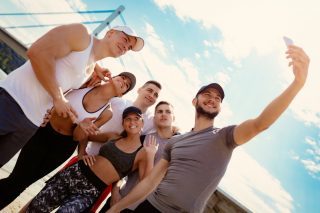
Birthdays are a chance to celebrate ourselves while doing something we love: running. We can also celebrate the runners in our lives who are turning a year older. Below are some unique and festive ways to celebrate your day or the day of a loved one:
Run the number of miles (or kilometers) you are turning.
This is a great idea, especially if you are turning 5 years old. If you are turning 50, then let’s hope you are in the best shape of your life. Hell, Dean Karnazes ran 30 miles on his 30th birthday, and he wasn’t even a runner at the time (but he is likely super human). If miles are too much, kilometers tend to work better—although it could still be a long run!
Send a special running card.
Some companies now make e-cards and paper cards specifically for runners. Someecards.com even has a special section for running related cards!
Give a gift basket or care package tailored to runners.
Put together a basket with unique flavored gels, a nice pair of running socks, an anti-chafe stick, toilet paper, a Road ID, protein bars or anything else you can think of.
Run a race in your own honor.
Regardless of the season, there seem to be races every weekend. To celebrate, pick a race and do it to celebrate your own birthday. Write “Happy Birthday” on your bib to get some special attention from spectators.
Give a race entry as a gift.
No runner will likely ever turn down a “free” race entry. Find a fun run in the city where the birthday runner lives and sign them up! Wrap up the race registration in a nice bow and present it to him or her with a running trinket like a bumper sticker or necklace charm.
Send a videogram from an elite athlete.
Check out athleteBiz.us, a service that helps make elite track and field athletes more relatable to all runners. You can find athletes like Meb Keflezighi and Ryan Hall on this site. Once you are connected, you can request a private videogram be sent from the athlete to your birthday friend!
Plan for a spa day.
Nothing feels better than a massage after a tough run or race. Plan for a day of relaxation for your big day. Or go book something like a manicure/pedicure for your birthday runner. It’s important to treat yo’ self!
Have a running party.
Invite all of your friends to meet at your driveway, your favorite trailhead or a parking lot somewhere. Go on a run together and then go out afterward for post-run brunch, lunch or beers.
Eat what you burn.
Give yourself the gift of overindulging. For fun, calculate about how many calories you burn on a run (roughly 100 calories per mile). Then have a blast replacing these calories with some decadent treat you rarely give yourself.
The post The 9 Best Ways To Celebrate A Runner’s Birthday appeared first on Competitor.com.
BOSTON World Premiere Raised $76,000 For Martin’s Park
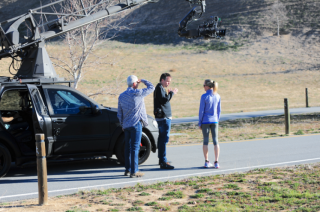
Photo: Director Jon Dunham directs American distance runner Shalane Flanagan Photo Credit: Cheryl Treworgy
The BOSTON Premiere at the Boch Center Wang Theatre this past April raised $76,000 for the Martin W. Richard Charitable Foundation. The Foundation is named in honor of Martin Richard, who was eight years old when he was tragically killed at the Boston Marathon on April 15, 2013 on Boylston Street.
Directed by award winning filmmaker-marathoner Jon Dunham, well known for his “Spirit of the Marathon” documentaries, BOSTON chronicles the celebrated history of the Boston Marathon, from its origins in 1897 through 2014’s triumphant race, and features many of the greatest marathoners ever to have run the Hopkinton to Boston route.
Related: Trailer for BOSTON Documentary Released
The filmmakers spent three years recording interviews with champions and runners from around the world, as well as the stories of members of the Boston Marathon communities. The production was granted exclusive documentary rights from the Boston Athletic Association to produce the film and to use the Association’s extensive archive of video, photos and memorabilia.
The BOSTON World Premiere, presented by John Hancock and The Boston Athletic Association, with support from WBZ-TV, took place at the Boch Center Wang Theatre in Boston on April 15, 2017.
A portion of every ticket sold to the world premiere was designated to support the Foundation and additional donations were made from attendees, sponsors and the public. The funds will to be used in support of Martin’s Park, a universally accessible park for families and visitors of all abilities located in Boston along the Fort Point Channel. They are expected to break ground on the park later this summer.
“BOSTON was an incredible film to make and we were honored to be able to tell the story of this epic event,” Megan Williams, producer of BOSTON, said in a press release. “To know that, through the world premiere, we have played a small role in bringing Martin’s Park to the city, makes it even more special. We all look forward to visiting the park once it is completed.”
Individuals are still encouraged to contribute to Martin’s Park by visiting www.crowdrise.com/martins-park.
The post BOSTON World Premiere Raised $76,000 For Martin’s Park appeared first on Competitor.com.
3 New Shoes That Are Made For Minimalist Runners
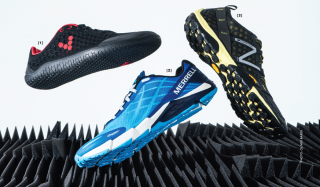
For those needing a brief history lesson, before the era of overblown, puff-shoed “Maximalism” running footwear, we were mired in a period ruled by people who went by monikers that started with “Barefoot.” There was palpable hostility toward those who ran in shoes with more than a 4mm heel-to-toe differential. Runners who landed on the back side of their feet were practically discriminated against, and those who landed on their forefeet called it “natural running.” Minimalists pontificated with religious fervor, and the movement gained cult-like followers.
And then the Minimalists got injured.
Nowadays, we understand that there is value in each extreme, and that a runner may benefit from having shoes with little and big stack heights, using them throughout their training cycle to stimulate and excite the feet and lower legs or, alternatively, allow for easy recovery.
Related: Safely Transitioning To A Minimalist Running Shoe
The following three companies have kept a steady hand when it comes to Minimalism, and have new shoes that carry on the devotion to a low drop, a wide toe box and minimal underfoot cushioning and protection to embrace forefoot running.
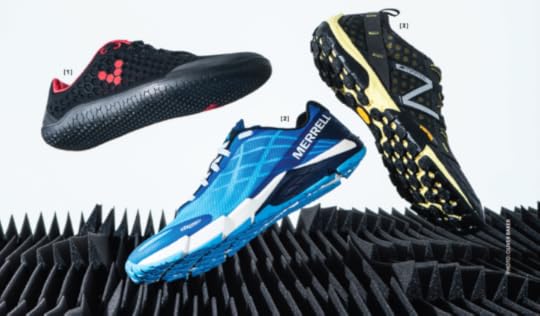
[1] Vivobarefoot Stealth II, $135
Heel-to-Toe Offset: 0mm
For the authentic Minimalist experience, the Stealth II is raw enough for a naked feeling with Vivobarefoot’s patented, ultra-thin, puncture-resistant layer that keeps you close to the ground without getting jabbed by it. The breathable mesh upper is heat fused to avoid any abrasive stitching—meaning no socks are necessary, should you want to take your minimalism one step further.
[2] Merrell Bare Access Flex, $90
Heel-to-Toe Offset: 0mm
Possibly because Minimalists tend to enjoy running barefoot, Merrell has integrated antimicrobial technology into the Bare Access Flex. This hybrid shoe is versatile for most any surface and it has the lug pattern, slip-resistant traction, integrated EVA footbed and flexibility to pull off performance on and off the road. The heel of the Bare Access Flex is built for snug security on ascents and descents alike.
[3] New Balance Minimus Trail 10v1, $115
Heel-to-Toe Offset: 4mm
New Balance resurrected what feels like the original Minimus Trail yet with fresh, antimicrobial upper materials, a Vibram outsole for rugged traction and functional flex grooves for sock-like movement with the foot. The toe box is wide enough for full forefoot splay, but the midfoot stays secure with a great hold.
Related: Three Misconceptions About Minimalist Footwear
The post 3 New Shoes That Are Made For Minimalist Runners appeared first on Competitor.com.
Ryan Hall's Blog
- Ryan Hall's profile
- 21 followers



